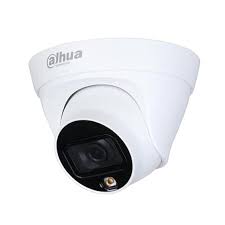IP Dome Cameras: Enhancing Security Surveillance with Advanced Technology
In the realm of security surveillance, IP dome cameras have emerged as a popular and effective solution for monitoring and safeguarding various environments. These dome-shaped cameras offer a range of features and benefits that make them a preferred choice for both residential and commercial applications.
One of the key advantages of IP dome cameras is their discreet design, making them ideal for installations where aesthetics are important. The dome shape not only conceals the direction in which the camera is pointing but also provides protection against tampering and vandalism, enhancing their durability and longevity.
Furthermore, IP dome cameras are known for their high-definition video quality, allowing for clear and detailed footage to be captured in various lighting conditions. With advanced features such as night vision capabilities, motion detection, and remote viewing via mobile devices or computers, these cameras provide round-the-clock monitoring and peace of mind to users.
Another notable aspect of IP dome cameras is their flexibility in terms of installation options. They can be mounted on ceilings or walls, offering versatile placement possibilities to suit different surveillance needs. Additionally, many IP dome cameras come equipped with pan-tilt-zoom (PTZ) functionality, enabling users to remotely control the camera’s movement and focus on specific areas of interest.
From enhancing security in homes, offices, retail stores, parking lots, to monitoring public spaces such as airports and stadiums, IP dome cameras play a crucial role in deterring crime, ensuring safety, and providing valuable evidence in case of incidents. Their integration with network video recorders (NVRs) allows for efficient storage and retrieval of footage for later review or analysis.
In conclusion, IP dome cameras represent a sophisticated yet user-friendly solution for modern-day surveillance needs. With their sleek design, advanced features, high-quality imaging capabilities, and versatile installation options, these cameras continue to be at the forefront of enhancing security measures across various environments.
Top 6 Advantages of IP Dome Cameras for Comprehensive Surveillance
- Discreet design for inconspicuous surveillance
- High-definition video quality for clear and detailed footage
- Night vision capabilities for 24/7 monitoring
- Flexible installation options on ceilings or walls
- Pan-tilt-zoom (PTZ) functionality for remote control
- Integration with NVRs for efficient storage and retrieval of footage
7 Drawbacks of Using IP Dome Cameras for Surveillance
- Limited field of view compared to some other camera types.
- Potential for glare or reflection on the dome surface affecting image quality.
- Higher initial cost compared to analog dome cameras.
- Complexity in setup and configuration for novice users.
- Vulnerable to dust and debris accumulation on the dome cover, requiring regular cleaning.
- Susceptible to condensation buildup inside the dome in humid environments, impacting visibility.
- Limited scalability options for expanding surveillance coverage without additional cameras.
Discreet design for inconspicuous surveillance
One of the key advantages of IP dome cameras is their discreet design, which allows for inconspicuous surveillance in various settings. The dome-shaped casing of these cameras helps conceal the direction in which they are pointing, making it difficult for individuals to determine where the camera is focused. This feature is particularly beneficial in environments where discreet monitoring is essential, such as retail stores, banks, or office spaces. The inconspicuous nature of IP dome cameras not only helps in deterring potential threats but also ensures that individuals within the monitored area act naturally, unaware of being under surveillance.
High-definition video quality for clear and detailed footage
The high-definition video quality offered by IP dome cameras ensures that users can capture clear and detailed footage with exceptional clarity. This feature allows for accurate identification of individuals, objects, and events in various lighting conditions, providing valuable visual evidence for security monitoring and surveillance purposes. The crisp and sharp images produced by IP dome cameras enable users to closely examine details within the footage, enhancing overall situational awareness and facilitating quick response to potential security threats or incidents.
Night vision capabilities for 24/7 monitoring
With its advanced night vision capabilities, IP dome cameras offer the invaluable advantage of 24/7 monitoring, ensuring continuous surveillance even in low-light or nighttime conditions. This feature allows users to maintain a watchful eye on their surroundings round the clock, enhancing security and providing peace of mind knowing that any suspicious activity can be captured and recorded with clarity and detail. Whether used in residential settings for home security or in commercial environments for perimeter monitoring, the night vision capabilities of IP dome cameras contribute significantly to maintaining a safe and secure environment at all times.
Flexible installation options on ceilings or walls
The flexibility of installation options for IP dome cameras, whether on ceilings or walls, is a significant advantage that enhances their usability in diverse surveillance settings. This feature allows for seamless integration of the cameras into different environments, providing users with the freedom to choose the most suitable placement for optimal coverage and monitoring. Whether mounted overhead for a wide-angle view or positioned on a wall to focus on specific areas, the versatility of installation options ensures that IP dome cameras can be effectively deployed to meet varying security needs with ease and efficiency.
Pan-tilt-zoom (PTZ) functionality for remote control
The Pan-Tilt-Zoom (PTZ) functionality of IP dome cameras offers a significant advantage by allowing users to remotely control the camera’s movement, pan across different angles, tilt up or down, and zoom in on specific areas of interest. This feature provides enhanced flexibility and convenience in monitoring various spaces without the need for physical adjustment of the camera. With PTZ functionality, users can easily navigate the camera to focus on specific details or track moving objects, thereby improving surveillance efficiency and ensuring comprehensive coverage of the area being monitored.
Integration with NVRs for efficient storage and retrieval of footage
The integration of IP dome cameras with Network Video Recorders (NVRs) offers a significant advantage in terms of efficient storage and retrieval of footage. By connecting IP dome cameras to NVRs, users can centrally manage and store video recordings, making it easier to access and review footage when needed. This seamless integration not only streamlines the surveillance process but also ensures that valuable video data is securely stored for future reference or analysis.
Limited field of view compared to some other camera types.
One drawback of IP dome cameras is their limited field of view when compared to certain other camera types. Due to their dome-shaped design, these cameras may have a narrower coverage area, which can result in blind spots or gaps in surveillance coverage. This limitation can be a concern, especially in larger areas or spaces that require comprehensive monitoring. In such cases, additional cameras may be needed to ensure full coverage, potentially increasing the overall cost of the surveillance system. It is important for users to consider this con and carefully assess their specific surveillance needs before opting for IP dome cameras to ensure effective and comprehensive security monitoring.
Potential for glare or reflection on the dome surface affecting image quality.
One of the drawbacks of IP dome cameras is the potential for glare or reflection on the dome surface, which can adversely affect image quality. In environments with bright lighting or direct sunlight, the curved surface of the dome can cause reflections that obscure or distort the captured footage. This glare can make it challenging to obtain clear and accurate images, compromising the overall effectiveness of the camera in surveillance applications. Proper positioning and installation of IP dome cameras, along with anti-glare measures, are essential to mitigate this issue and ensure optimal performance in varying lighting conditions.
Higher initial cost compared to analog dome cameras.
One of the drawbacks of IP dome cameras is their higher initial cost compared to analog dome cameras. The advanced technology and features incorporated in IP cameras, such as high-definition video quality, remote accessibility, and intelligent analytics, contribute to their increased price point. While the initial investment may be higher, it is important to consider the long-term benefits and cost savings that IP dome cameras offer in terms of improved security effectiveness, scalability, and reduced maintenance requirements over time. Despite the higher upfront expense, many users find that the enhanced capabilities and performance of IP dome cameras justify the initial cost.
Complexity in setup and configuration for novice users.
Setting up and configuring IP dome cameras can pose a significant challenge for novice users due to their complexity. From network settings to software installation, understanding the technical requirements and nuances involved in getting the camera up and running may require a certain level of expertise that inexperienced users may lack. The intricacies of adjusting camera angles, configuring motion detection settings, and ensuring seamless integration with existing networks can be overwhelming for those unfamiliar with surveillance technology. As a result, the learning curve associated with setting up IP dome cameras may deter novice users from fully maximizing the potential of these advanced security devices.
Vulnerable to dust and debris accumulation on the dome cover, requiring regular cleaning.
IP dome cameras, despite their many advantages, are susceptible to a notable drawback: the accumulation of dust and debris on the dome cover. This issue necessitates regular cleaning to maintain optimal performance and clear visibility. The presence of dirt particles can obstruct the camera’s lens, leading to blurred or distorted images, which can compromise the effectiveness of surveillance efforts. To mitigate this vulnerability, users must be diligent in ensuring that the dome cover is kept clean and free from debris buildup, requiring additional maintenance efforts compared to other types of security cameras.
Susceptible to condensation buildup inside the dome in humid environments, impacting visibility.
In humid environments, one significant drawback of IP dome cameras is their susceptibility to condensation buildup inside the dome, which can adversely affect visibility. The moisture accumulation can distort the camera’s view, leading to blurred or obscured footage, compromising the effectiveness of surveillance efforts. This condensation issue not only impacts the quality of video recordings but also requires regular maintenance to prevent potential damage to the camera components. Addressing this challenge in humid conditions is crucial to ensure consistent and reliable performance of IP dome cameras for optimal security surveillance.
Limited scalability options for expanding surveillance coverage without additional cameras.
One notable drawback of IP dome cameras is their limited scalability options for expanding surveillance coverage without the need for additional cameras. While these cameras offer high-definition video quality and versatile installation options, their fixed field of view can pose a challenge when trying to monitor larger areas or multiple angles within a single space. This limitation may require users to invest in additional cameras to achieve the desired surveillance coverage, leading to increased costs and potential complexities in managing multiple camera feeds. As a result, the scalability of IP dome cameras may be constrained when it comes to expanding surveillance capabilities without adding more devices, which can be a consideration for those looking to optimize their security setup efficiently.


